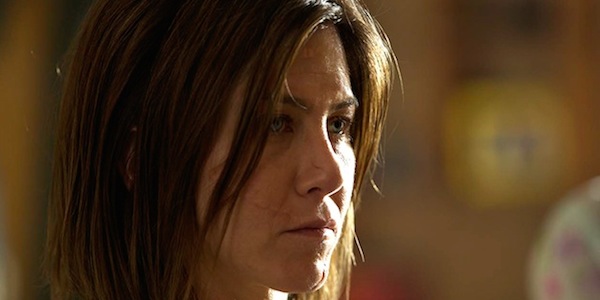Piece of ‘Cake’: Director Daniel Barnz Talks About His Toronto Success

Among the talented filmmakers who screened at the Toronto International Film Festival earlier this month was Film Independent Member Daniel Barnz, director of the film Cake which premiered in the Special Presentations section and has since been getting a lot of buzz—much of it for Jennifer Aniston’s impressive (and decidedly unglamorous) lead performance as a painkiller-addicted woman who suffers from chronic pain. Following the film’s premiere, we spoke with Barnz about the project’s whirlwind production schedule and his collaborative approach to working with actors.
It’s really quite incredible that the film was ready to premiere at Toronto this year—Barnz only first read the script last June. “I had agreed to judge a screenwriting competition,” Barnz explained, “ in part because this competition held a very special place in my own heart, because I had won it for my film Phoebe in Wonderland [which became Barnz’s directorial debut as well] years ago.” Last year’s winner was Patrick Tobin’s Cake screenplay. “I just thought it was one of the best pieces of writing that I had read in the longest time,” Barnz recalled. “Patrick’s voice is so telling, and so strong and so capable of being haunting and funny at the same time.”
After developing the screenplay with his partner Ben Barnz and Tobin for a few months, they sent out the script to talent agents with their fingers crossed. “It was like those crazy overnight stories that you hear about but never actually happen, where everybody read the screenplay and everybody was so excited about it,” Barnz said. “Ben was literally besieged with phone calls from talent agents who were pitching the most remarkable, dreamy names, and we realized at that moment that in fact we had tremendous options in casting.”
The producing team knew that it would take a special actress to play Claire, the difficult lead role, which Barnz described as “a woman who is essentially very acerbic and very difficult and can be very harsh, but who you’ll always forgive.” Impressed by Aniston’s more dramatic, distinctly un-Friends-y turn in The Good Girl, Barnz reached out to her. “I wrote her a really passionate letter,” he said—and it worked. Aniston read the script and loved it, and the actress and director met in November. “She asked when we would like to shoot, and we said April, knowing that was the earliest we could possibly shoot,” Barnz said, “and sure enough, by April 3, we were shooting.”
After Aniston signed on, the actress and director entered into a highly collaborative rehearsal process. “We had the great advantage of being in the same city for a long period of time before we began shooting,” he recalled, “so it was a very rare and kind of amazing rehearsal process. So often when you’re shooting out of town, the actors only show up, you know, a week beforehand, you try to cram in a little bit of script work, and then you’re off and running.” In the weeks leading up to the shoot, Aniston and Barnz read through the script over and over and met with people who suffer from chronic pain in a collaborative effort to develop Aniston’s voice and physicality to portray Claire’s pain honestly.
“I am a prep junkie,” Barnz admitted. “I really do an enormous amount of preparatory work myself.” He begins by writing a vision statement and creating an elaborate visual mood book, both of which he shares with his cast. “I think it’s a great way to show them my vision for the movie, but what it also does is it establishes a relationship in which I say to them, ‘I’m a filmmaker and I know, in your way, you’re a filmmaker as well, and we should be thinking about this project very collaboratively.’”
Barnz embraces collaboration rather than directorial dictatorship. “I think my job as a filmmaker is to attract people who are incredibly talented at what they do and then let them be talented at that,” he said. “Sometimes I think people confuse directing with inflexibility or micromanagement, and for me I really think about everybody in the process as a fellow artist.” He is also definitely not a filmmaker who views actors as animate props, and he emphasized the importance of communicating his respect for them: “I think what actors do is incredible. It’s really so brave to bare your soul in this way for millions of people to see. I have such extraordinary respect, and I don’t hold back from expressing that. So that, I think, creates a relationship in which they understand that this is somebody who really appreciates the art of acting.”
Barnz knows how lucky he is to have brought his film together with such a great team on such an accelerated schedule. “I’m grateful because I have experienced the opposite,” he said. “The first film that Ben and I did together, Phoebe in Wonderland, essentially took thirteen years from inception to completion, and this one was thirteen months.” Decade-plus projects like that are not unusual in the indie world because, as Barnz explained, “frequently, with independent film, it is a story of overcoming ‘No.’ Everybody is always telling you no, and you have to be really persistent, and overcome those no’s, and eventually it works out.” Serendipitously, with Cake, “it was a lot of people saying yes.”
Mary Sollosi / Film Independent Blogger

